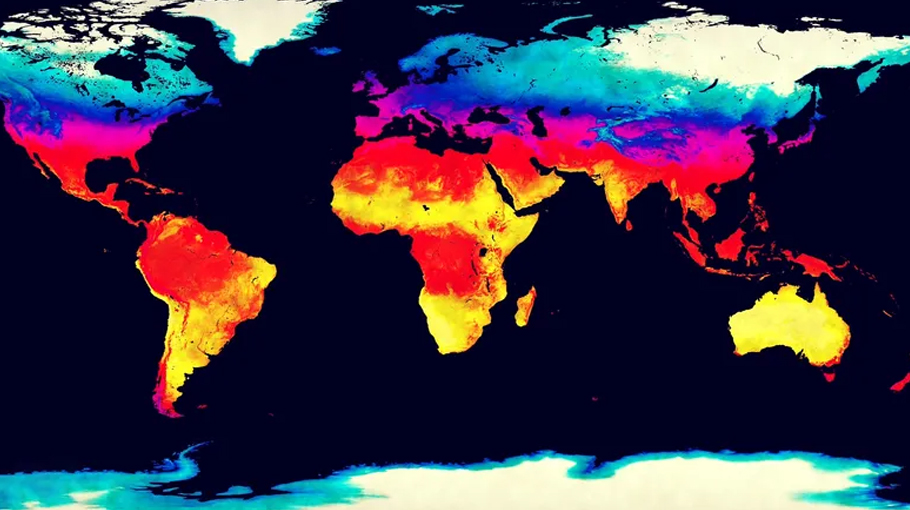Climate variability creating difficult encounters

As in the case of the past two years, the media and climatologists have been focusing on different continents being on fire, on the melting of glaciers and also on coral reefs dying in different oceans in different parts of the world. This has resulted in political leaders as well as environmental activists to draw attention to this deteriorating situation and urge all to save our planet.
In this context, environmentalists have asserted that climate change has been driving the scale and impact of recent wildfires that have been raging in Australia, in the United States and also in several parts of Brazil and Europe. Scientific analysts have noted that there is an "unequivocal and pervasive" role for global heating in boosting the conditions for fire. They have, in this context, also disputed claims that land management issues are the real cause rather than climate variability.
A recent research carried out over origins of wildfires in Australia during the 2019-20 season has shown that climate change due to a combination of high temperatures, low humidity, low rainfall and high winds was behind the severity of fire weather. It may be mentioned here that in the 40 years from 1979 to 2019, fire weather conditions have increased by a total of eight days on average across the world. The authors of the review have concluded that "climate change is bringing hotter, drier weather to the western US and the region is fundamentally more exposed to fire risks than it was before humans began to alter the global climate". This is proving to be so also in other parts of the world where the encroachment of human settlements into forested areas has put many more homes at risk of these blazes.
Jonathan Amos of the BBC has noted that conditions are becoming alarming also in the Arctic where sea-ice has shrunk to near record low. Last summer's Arctic sea-ice apparently shrunk to its second lowest ever extent in the era of satellite observation. The floes had withdrawn to just under 3.74 million square km. It would be important to note here that the radar altimeters that gauge the thickness of the floes do so by measuring the difference in height between the top surface of the sea-ice and the surface of the ocean - the ice freeboard. It has however also been observed that shorter autumn days and encroaching cold could mean that the floes might start to regrow. However, this fresh growth could possibly melt faster during the coming year. That is bad news for the climate.
We need to remember that larger area of sea-ice helps cool the Arctic and the rest of the planet. On the other hand, in its absence, more sunlight will be absorbed by the darker surface waters of the ocean, which will promote further warming and further loss of ice. Such reduction and loss of sea ice would threaten Arctic wildlife, from polar bears and seals to plankton and algae.
Antarctic sea-ice has also been known to be highly variable in space and time. In winter, it can extend to encompass an area touching 18 million square km - more than the area of the land continent itself. In summer, the floating ice melts away to as little as 2-3 million square km. However, scientists till now have been unable to have an accurate assessment of the third dimension - floe thickness and thus volume.
There is growing consensus among climate scientists that summertime Arctic waters are also eroding the ice sheets covering Arctic lands in Canada and Greenland.
That dynamics would be unacceptable for many parts of the world with low lying coastal regions like Bangladesh. The faster those ice sheets melt into the surrounding ocean; it will in all likelihood, induce a faster sea level rise worldwide. That is a sobering aspect where tens of million will be more exposed to the devastating effects of climate breakdown.
We need to remember here that the 2015 landmark Paris climate deal enjoined nations to limit global temperature rises to "well below" two degrees Celsius through a rapid and sweeping reduction in greenhouse gas emissions.
However, emissions have continued to rise despite the agreement. This has led several strategic analysts to warn that without a thoroughly re-tooled global economy prioritizing green growth, the chances are that there will be very little and insignificant mitigating effect on climate change.
It would be pertinent at this point to draw attention to Prime Minister Sheikh Hasina’s article on various dimensions of climate change that appeared sometime ago in the British newspaper- The Guardian. She highlighted the devastating impacts of natural calamities and noted that the world ‘must act on climate’. She has also observed that - “the climate crisis with its economic fallout is crying out for international leadership and cooperation. No country should turn its back on the rest of the world at this time.” As the former Chair of the Climate Vulnerable Forum (CVF), she also reiterated that “at the next UN Climate Change Conference of the Parties, countries must commit to enhancing their nationally determined contributions and ultimately give us hope for tackling all the other problems that afflict our collective existence.”
In her presentation, she also drew attention of the readers to the fact that due to gradual rise of the sea water nearly one-third of Bangladesh coast line face the hazard of being under water during the rain season. This has proven to be true in the recent past when heavy rain inflicted serious damage both to agriculture and fish farming. It also displaced more than 1.5 million Bangladeshis and washed away tens of thousands of hectares of paddy fields. This natural disaster had created a serious social and economic imbalance.
This development had also resulted in economic lockdowns that affected our textile industry and exports. This scenario also raised the unemployment rate. By pointing to these after effects, Prime Minister Hasina has shared the fact that like many other countries affected by climate change, we all need to work together to save lives, shore up healthcare systems, cushion the economic shock for millions of people and through inter-active engagement avoid fiscal collapse.
We need to understand that there is a need for international commitment to solve these complex problems. This aspect needs to be particularly understood by the world’s largest emitters, especially by all the G20 countries. They are responsible for about 80% of total global emissions, while the bottom 100 countries only account for 3.5%. Economists consequently underline that the world cannot successfully tackle the climate challenge without significant action from everyone.
It has consequently been heartening to see China taking a more positive approach towards reducing carbon emissions as compared to United States. It may be noted that President Xi Jinping addressing the UN during the 75th session of the UNGA announced that China will try to reduce emissions before 2030 and will also try for carbon neutrality by 2060. This announcement was a major fillip for the European Union, whose leaders had urged President Xi to take exactly this step as part of a joint push on lowering emissions.
This is good news, given the fact that China has been for some time one of the world's biggest source of carbon dioxide and responsible for around 28% of global emissions. One can only hope that China will spell out their medium-term and long- term plans on how they intend to move away from fossil fuels during the forthcoming global climate negotiations. Such an approach by China needs to be carefully monitored by the CVF – a group of 48 countries disproportionately affected by a warming planet- Bangladesh among them.
It may be noted here that CVF nations have been at the forefront of climate adaptation as well as climate change, promoting initiatives such as building stronger shelters against cyclones and replanting mangrove forests to protect coastal communities from sea surges. It would be worthwhile to point out that Bangladesh has already built 4,291 cyclone shelters and 593 flood shelters. More than 56,000 volunteers have also been trained for providing support in times of dire need.
It may be recalled in this regard that the Sustainable Development Report 2020 indicated that 43 countries in Africa and many more across Asia and Latin America have also almost achieved their climate action goals.
One needs to conclude by pointing out that ambitious climate initiatives are however unlikely to succeed without introduction of greater renewable energy efforts, use of world-class technology and pioneering climate research.
Muhammad Zamir, a former Ambassador, is an analyst specialized in foreign affairs, right to information and good governance, can be reached at <muhammadzamir0@gmail.com>




